 | World Class |
|---|
| (c) Copyright 1995 Digi-Rule, Inc. |
A stereogram is a picture designed to give the impression of a three-dimensional image. Focus on an object in the distance, maintain that focal point, move the stereogram into your field of vision, stare blankly for awhile, and with patience the image will suddenly appear.
Answer: Soccer match
Bohdan Petyhyrycz is the president and co-founder of Digi-Rule, Inc., a high-technology firm that started with one of his inventions. His extensive training in the fine arts, combined with his tinkering with the autostereogram principle since the late seventies, is evident in the quality of his work.
For more information on Digi-Rule 3D books and posters, please call (403) 292-0320 or write to 2001 10th Ave. SW, Calgary, Alberta, Canada T3C OK4. |
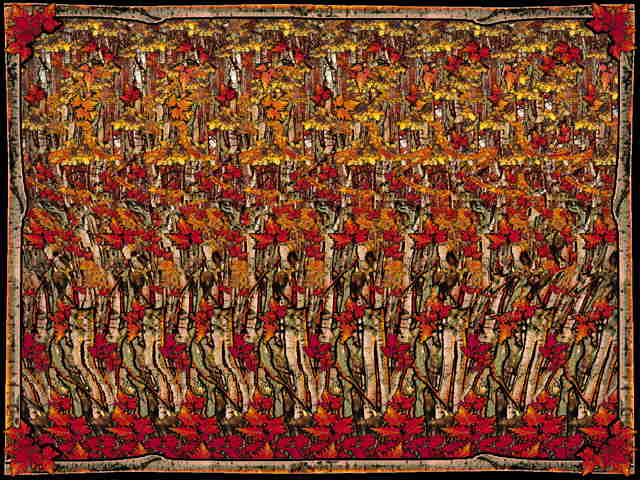 | Northern Adventure |
|---|
| (c) Copyright 1995 Digi-Rule, Inc. |
A stereogram is a picture designed to give the impression of a three-dimensional image. Focus on an object in the distance, maintain that focal point, move the stereogram into your field of vision, stare blankly for awhile, and with patience the image will suddenly appear.
Answer: Moose
Bohdan Petyhyrycz is the president and co-founder of Digi-Rule, Inc., a high-technology firm that started with one of his inventions. His extensive training in the fine arts, combined with his tinkering with the autostereogram principle since the late seventies, is evident in the quality of his work.
For more information on Digi-Rule 3D books and posters, please call (403) 292-0320 or write to 2001 10th Ave. SW, Calgary, Alberta, Canada T3C OK4. |
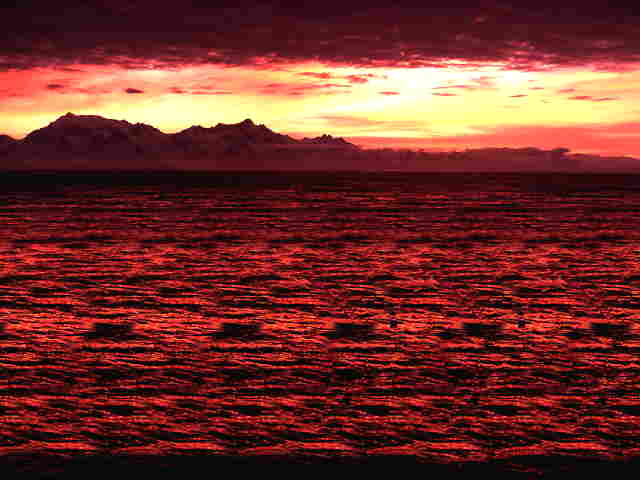 | Fair Weather |
|---|
| (c) Copyright 1995 I.C.G., Inc. |
A stereogram is a picture designed to give the impression of a three-dimensional image. Focus on an object in the distance, maintain that focal point, move the stereogram into your field of vision, stare blankly for awhile, and with patience the image will suddenly appear.
Answer: Seagull
I.C.G., Inc., creates unique imagery from the Inner Realm(TM) for animation, advertising, and sometimes just for fun. Inner Realm(TM) images are also licensed for use to create retail and corporate products.
For more information, please call (714) 458-6995 or write to P.O. Box 4091, Laguna Beach, CA 92652 USA. |
 | Coffee Break |
|---|
| (c) Copyright 1995 I.C.G., Inc. |
A stereogram is a picture designed to give the impression of a three-dimensional image. Focus on an object in the distance, maintain that focal point, move the stereogram into your field of vision, stare blankly for awhile, and with patience the image will suddenly appear.
Answer: Cup and saucer
I.C.G., Inc., creates unique imagery from the Inner Realm(TM) for animation, advertising, and sometimes just for fun. Inner Realm(TM) images are also licensed for use to create retail and corporate products.
For more information, please call (714) 458-6995 or write to P.O. Box 4091, Laguna Beach, CA 92652 USA. |
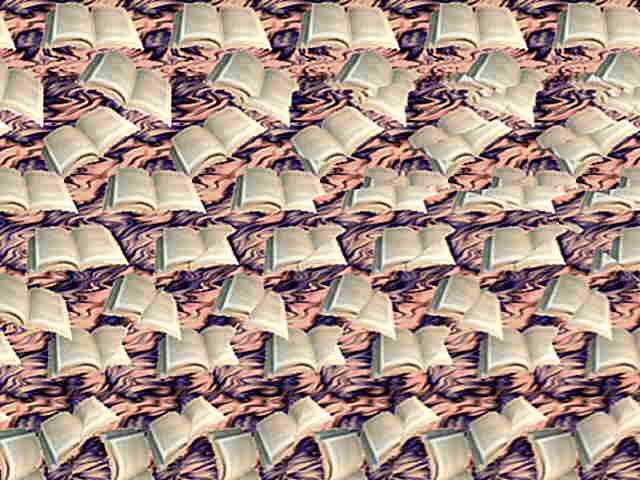 | Quest for Knowledge |
|---|
| (c) Copyright 1995 I.C.G., Inc. |
A stereogram is a picture designed to give the impression of a three-dimensional image. Focus on an object in the distance, maintain that focal point, move the stereogram into your field of vision, stare blankly for awhile, and with patience the image will suddenly appear.
Answer: Space shuttle
I.C.G., Inc., creates unique imagery from the Inner Realm(TM) for animation, advertising, and sometimes just for fun. Inner Realm(TM) images are also licensed for use to create retail and corporate products.
For more information, please call (714) 458-6995 or write to P.O. Box 4091, Laguna Beach, CA 92652 USA. |
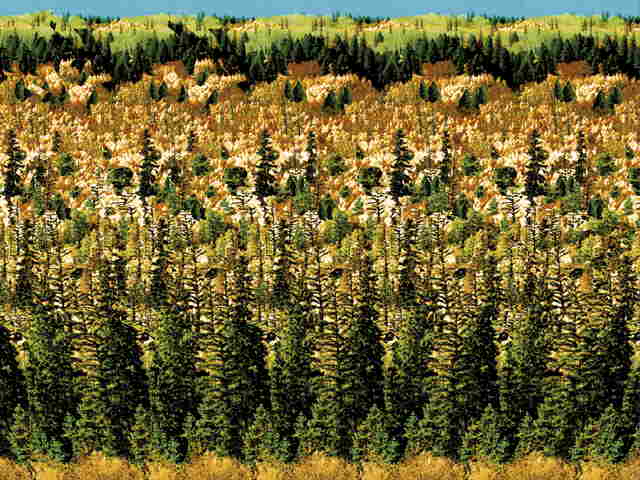 | From a Distance |
|---|
| (c) Copyright 1995 Digi-Rule, Inc. |
A stereogram is a picture designed to give the impression of a three-dimensional image. Focus on an object in the distance, maintain that focal point, move the stereogram into your field of vision, stare blankly for awhile, and with patience the image will suddenly appear.
Answer: Family of deer
Bohdan Petyhyrycz is the president and co-founder of Digi-Rule, Inc., a high-technology firm that started with one of his inventions. His extensive training in the fine arts, combined with his tinkering with the autostereogram principle since the late seventies, is evident in the quality of his work.
For more information on Digi-Rule 3D books and posters, please call (403) 292-0320 or write to 2001 10th Ave. SW, Calgary, Alberta, Canada T3C OK4. |
 | Spring in Bloom |
|---|
| (c) Copyright 1995 I.C.G., Inc. |
A stereogram is a picture designed to give the impression of a three-dimensional image. Focus on an object in the distance, maintain that focal point, move the stereogram into your field of vision, stare blankly for awhile, and with patience the image will suddenly appear.
Answer: Flower
I.C.G., Inc., creates unique imagery from the Inner Realm(TM) for animation, advertising, and sometimes just for fun. Inner Realm(TM) images are also licensed for use to create retail and corporate products.
For more information, please call (714) 458-6995 or write to P.O. Box 4091, Laguna Beach, CA 92652 USA. |
 | Bright and Busy |
|---|
| (c) Copyright 1995 Small Wonders of Orlando, Inc. |
A stereogram is a picture designed to give the impression of a three-dimensional image. Focus on an object in the distance, maintain that focal point, move the stereogram into your field of vision, stare blankly for awhile, and with patience the image will suddenly appear.
Answer: Bee and flower
Brian Small is the owner of Small Wonders of Orlando, Inc. The 24-year-old artist recently graduated from the University of Central Florida with a degree in computer science, specializing in computer graphics. He uses a special coloring process to make his stereograms unique.
For book and poster information, please contact Brian at Small Wonders of Orlando, Inc., in Orlando, Florida, USA. |
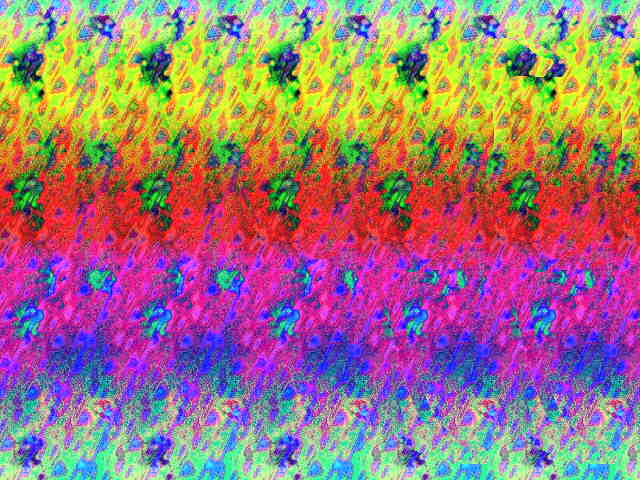 | Mesozoic Racer |
|---|
| (c) Copyright 1995 I.C.G., Inc. |
A stereogram is a picture designed to give the impression of a three-dimensional image. Focus on an object in the distance, maintain that focal point, move the stereogram into your field of vision, stare blankly for awhile, and with patience the image will suddenly appear.
Answer: Saltopus
I.C.G., Inc., creates unique imagery from the Inner Realm(TM) for animation, advertising, and sometimes just for fun. Inner Realm(TM) images are also licensed for use to create retail and corporate products.
For more information, please call (714) 458-6995 or write to P.O. Box 4091, Laguna Beach, CA 92652 USA. |
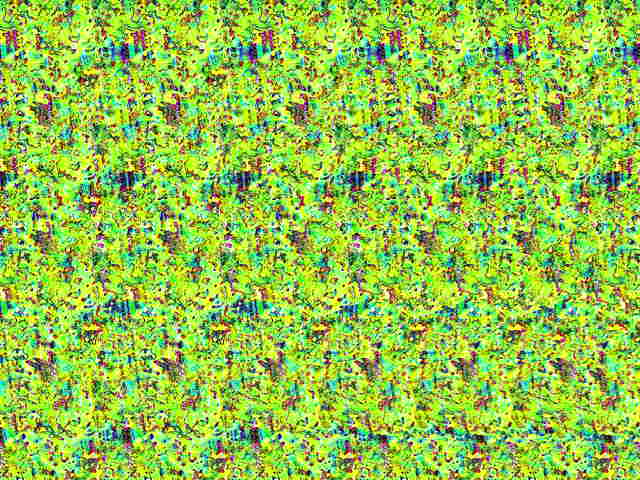 | On Sunset Pond |
|---|
| (c) Copyright 1995 I.C.G., Inc. |
A stereogram is a picture designed to give the impression of a three-dimensional image. Focus on an object in the distance, maintain that focal point, move the stereogram into your field of vision, stare blankly for awhile, and with patience the image will suddenly appear.
Answer: Ducks
I.C.G., Inc., creates unique imagery from the Inner Realm(TM) for animation, advertising, and sometimes just for fun. Inner Realm(TM) images are also licensed for use to create retail and corporate products.
For more information, please call (714) 458-6995 or write to P.O. Box 4091, Laguna Beach, CA 92652 USA. |
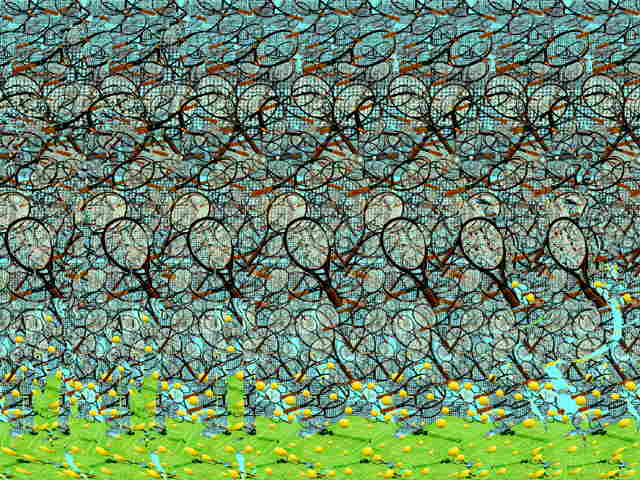 | Match Point |
|---|
| (c) Copyright 1995 Digi-Rule, Inc. |
A stereogram is a picture designed to give the impression of a three-dimensional image. Focus on an object in the distance, maintain that focal point, move the stereogram into your field of vision, stare blankly for awhile, and with patience the image will suddenly appear.
Answer: Tennis match
Bohdan Petyhyrycz is the president and co-founder of Digi-Rule, Inc., a high-technology firm that started with one of his inventions. His extensive training in the fine arts, combined with his tinkering with the autostereogram principle since the late seventies, is evident in the quality of his work.
For more information on Digi-Rule 3D books and posters, please call (403) 292-0320 or write to 2001 10th Ave. SW, Calgary, Alberta, Canada T3C OK4. |
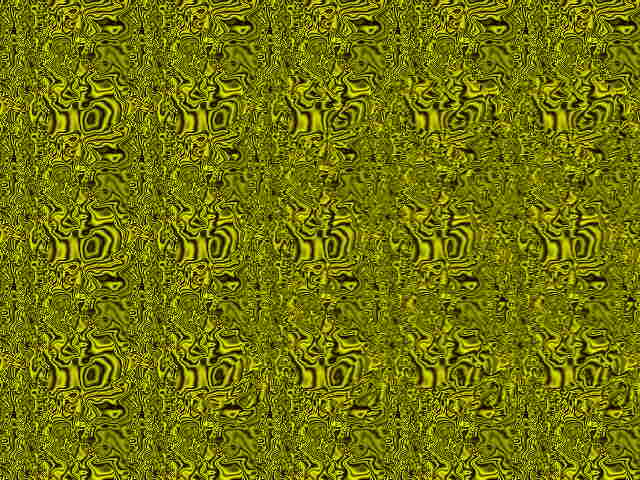 | Rise and Shine |
|---|
| (c) Copyright 1995 I.C.G., Inc. |
A stereogram is a picture designed to give the impression of a three-dimensional image. Focus on an object in the distance, maintain that focal point, move the stereogram into your field of vision, stare blankly for awhile, and with patience the image will suddenly appear.
Answer: Alarm clock
I.C.G., Inc., creates unique imagery from the Inner Realm(TM) for animation, advertising, and sometimes just for fun. Inner Realm(TM) stereograms are also licensed for use in creating corporate and retail products.
For more information, please call (714) 458-6995 or write to P.O. Box 4091, Laguna Beach, CA 92652 USA. |
 | Swamp Creature |
|---|
| (c) Copyright 1995 I.C.G., Inc. |
A stereogram is a picture designed to give the impression of a three-dimensional image. Focus on an object in the distance, maintain that focal point, move the stereogram into your field of vision, stare blankly for awhile, and with patience the image will suddenly appear.
Answer: Alligator
I.C.G., Inc., creates unique imagery from the Inner Realm(TM) for animation, advertising, and sometimes just for fun. Inner Realm(TM) images are also licensed for use to create retail and corporate products.
For more information, please call (714) 458-6995 or write to P.O. Box 4091, Laguna Beach, CA 92652 USA. |
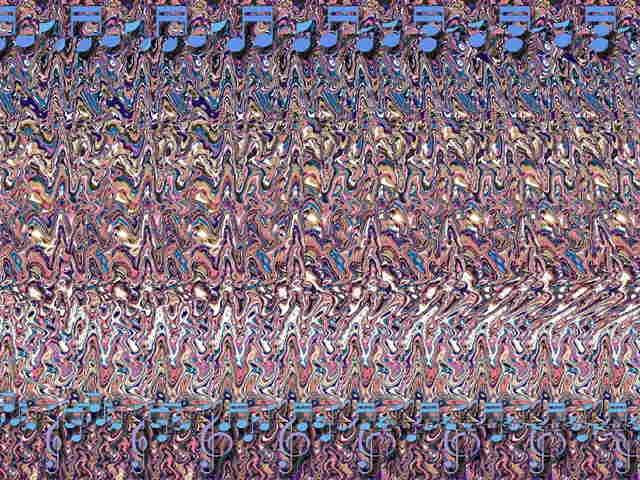 | Eighty-Eight Keys |
|---|
| (c) Copyright 1995 Small Wonders of Orlando, Inc. |
A stereogram is a picture designed to give the impression of a three-dimensional image. Focus on an object in the distance, maintain that focal point, move the stereogram into your field of vision, stare blankly for awhile, and with patience the image will suddenly appear.
Answer: Pianist
Brian Small is the owner of Small Wonders of Orlando, Inc. The 24-year-old artist recently graduated from the University of Central Florida with a degree in computer science, specializing in computer graphics. He uses a special coloring process to make his stereograms unique.
For book and poster information, please contact Brian at Small Wonders of Orlando, Inc., in Orlando, Florida, USA. |
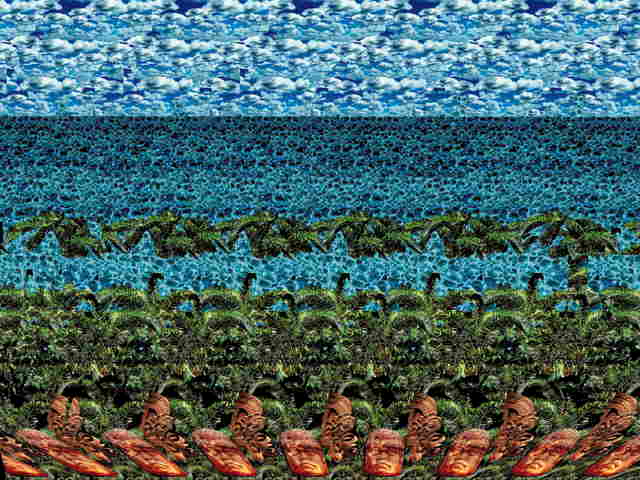 | Ruins |
|---|
| (c) Copyright 1995 Digi-Rule, Inc. |
A stereogram is a picture designed to give the impression of a three-dimensional image. Focus on an object in the distance, maintain that focal point, move the stereogram into your field of vision, stare blankly for awhile, and with patience the image will suddenly appear.
Answer: Step pyramid
Bohdan Petyhyrycz is the president and co-founder of Digi-Rule, Inc., a high-technology firm that started with one of his inventions. His extensive training in the fine arts, combined with his tinkering with the autostereogram principle since the late seventies, is evident in the quality of his work.
For more information on Digi-Rule 3D books and posters, please call (403) 292-0320 or write to 2001 10th Ave. SW, Calgary, Alberta, Canada T3C OK4. |
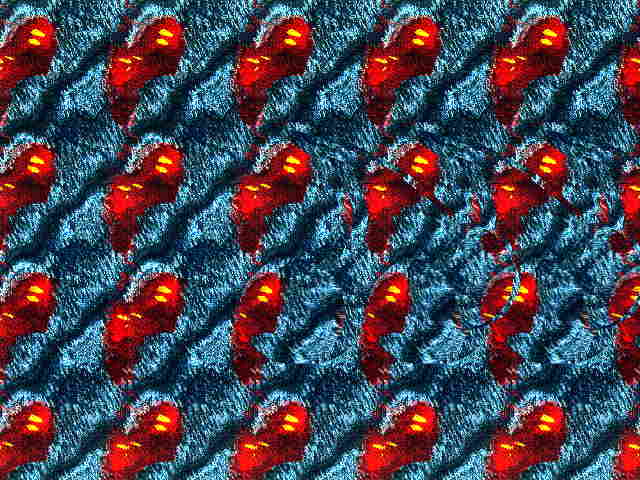 | Less Than a Bushel |
|---|
| (c) Copyright 1995 I.C.G., Inc. |
A stereogram is a picture designed to give the impression of a three-dimensional image. Focus on an object in the distance, maintain that focal point, move the stereogram into your field of vision, stare blankly for awhile, and with patience the image will suddenly appear.
Answer: Cherries
I.C.G., Inc., creates unique imagery from the Inner Realm(TM) for animation, advertising, and sometimes just for fun. Inner Realm(TM) images are also licensed for use to create retail and corporate products.
For more information, please call (714) 458-6995 or write to P.O. Box 4091, Laguna Beach, CA 92652 USA. |
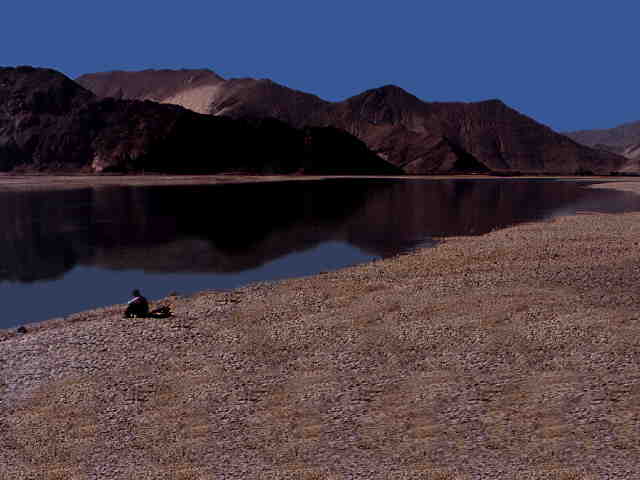 | Sand Trap |
|---|
| (c) Copyright 1995 I.C.G., Inc. |
A stereogram is a picture designed to give the impression of a three-dimensional image. Focus on an object in the distance, maintain that focal point, move the stereogram into your field of vision, stare blankly for awhile, and with patience the image will suddenly appear.
Answer: Shark
I.C.G., Inc., creates unique imagery from the Inner Realm(TM) for animation, advertising, and sometimes just for fun. Inner Realm(TM) images are also licensed for use to create retail and corporate products.
For more information, please call (714) 458-6995 or write to P.O. Box 4091, Laguna Beach, CA 92652 USA. |
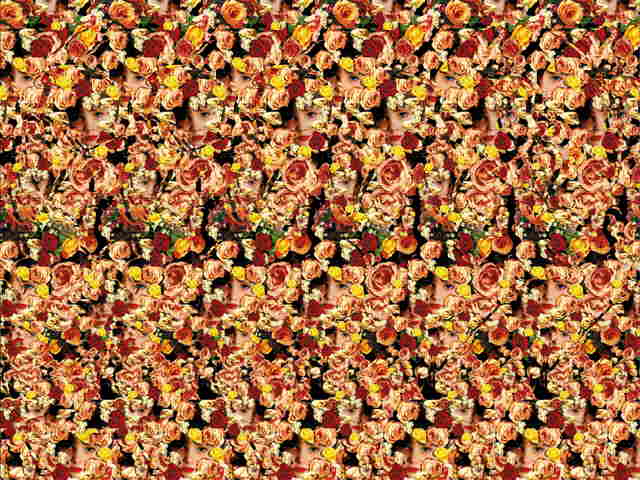 | Matchmakers |
|---|
| (c) Copyright 1995 Digi-Rule, Inc. |
A stereogram is a picture designed to give the impression of a three-dimensional image. Focus on an object in the distance, maintain that focal point, move the stereogram into your field of vision, stare blankly for awhile, and with patience the image will suddenly appear.
Answer: Floating cherubs
Bohdan Petyhyrycz is the president and co-founder of Digi-Rule, Inc., a high-technology firm that started with one of his inventions. His extensive training in the fine arts, combined with his tinkering with the autostereogram principle since the late seventies, is evident in the quality of his work.
For more information on Digi-Rule 3D books and posters, please call (403) 292-0320 or write to 2001 10th Ave. SW, Calgary, Alberta, Canada T3C OK4. |
 | Desert Conflict |
|---|
| (c) Copyright 1995 Digi-Rule, Inc. |
A stereogram is a picture designed to give the impression of a three-dimensional image. Focus on an object in the distance, maintain that focal point, move the stereogram into your field of vision, stare blankly for awhile, and with patience the image will suddenly appear.
Answer: Eagle, snake, and cow’s skull
Bohdan Petyhyrycz is the president and co-founder of Digi-Rule, Inc., a high-technology firm that started with one of his inventions. His extensive training in the fine arts, combined with his tinkering with the autostereogram principle since the late seventies, is evident in the quality of his work.
For more information on Digi-Rule 3D books and posters, please call (403) 292-0320 or write to 2001 10th Ave. SW, Calgary, Alberta, Canada T3C OK4. |
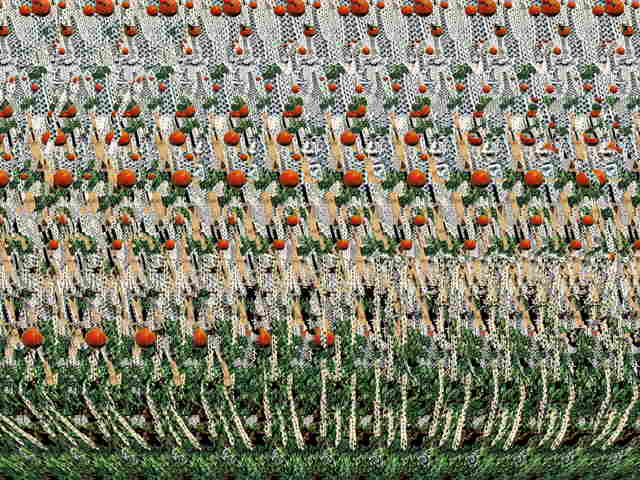 | Sticky Wicket |
|---|
| (c) Copyright 1995 Digi-Rule, Inc. |
A stereogram is a picture designed to give the impression of a three-dimensional image. Focus on an object in the distance, maintain that focal point, move the stereogram into your field of vision, stare blankly for awhile, and with patience the image will suddenly appear.
Answer: Cricket match
Bohdan Petyhyrycz is the president and co-founder of Digi-Rule, Inc., a high-technology firm that started with one of his inventions. His extensive training in the fine arts, combined with his tinkering with the autostereogram principle since the late seventies, is evident in the quality of his work.
For more information on Digi-Rule 3D books and posters, please call (403) 292-0320 or write to 2001 10th Ave. SW, Calgary, Alberta, Canada T3C OK4. |
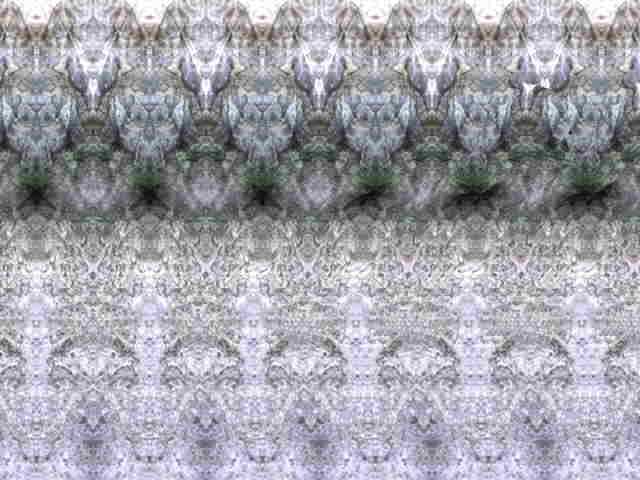 | Classical Rhythm |
|---|
| (c) Copyright 1995 I.C.G., Inc. |
A stereogram is a picture designed to give the impression of a three-dimensional image. Focus on an object in the distance, maintain that focal point, move the stereogram into your field of vision, stare blankly for awhile, and with patience the image will suddenly appear.
Answer: Guitar
I.C.G., Inc., creates unique imagery from the Inner Realm(TM) for animation, advertising, and sometimes just for fun. Inner Realm(TM) images are also licensed for use to create retail and corporate products.
For more information, please call (714) 458-6995 or write to P.O. Box 4091, Laguna Beach, CA 92652 USA. |
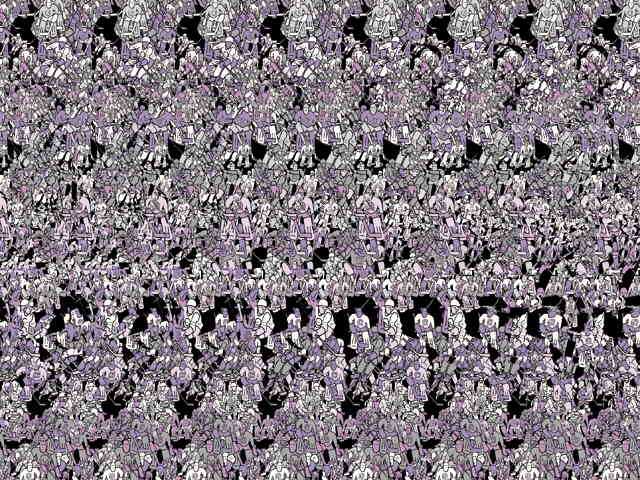 | Save the Day |
|---|
| (c) Copyright 1995 Digi-Rule, Inc. |
A stereogram is a picture designed to give the impression of a three-dimensional image. Focus on an object in the distance, maintain that focal point, move the stereogram into your field of vision, stare blankly for awhile, and with patience the image will suddenly appear.
Answer: Hockey goalie
Bohdan Petyhyrycz is the president and co-founder of Digi-Rule, Inc., a high-technology firm that started with one of his inventions. His extensive training in the fine arts, combined with his tinkering with the autostereogram principle since the late seventies, is evident in the quality of his work.
For more information on Digi-Rule 3D books and posters, please call (403) 292-0320 or write to 2001 10th Ave. SW, Calgary, Alberta, Canada T3C OK4. |
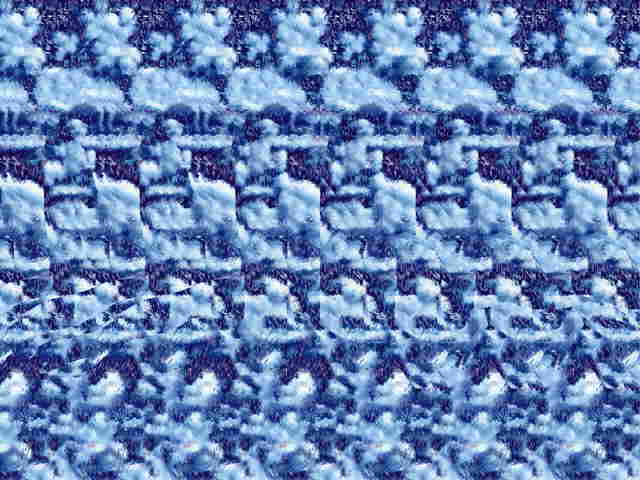 | Free Fall |
|---|
| (c) Copyright 1995 Small Wonders of Orlando, Inc. |
A stereogram is a picture designed to give the impression of a three-dimensional image. Focus on an object in the distance, maintain that focal point, move the stereogram into your field of vision, stare blankly for awhile, and with patience the image will suddenly appear.
Answer: Skydiver
Brian Small is the owner of Small Wonders of Orlando, Inc. The 24-year-old artist recently graduated from the University of Central Florida with a degree in computer science, specializing in computer graphics. He uses a special coloring process to make his stereograms unique.
For book and poster information, please contact Brian at Small Wonders of Orlando, Inc., in Orlando, Florida, USA. |
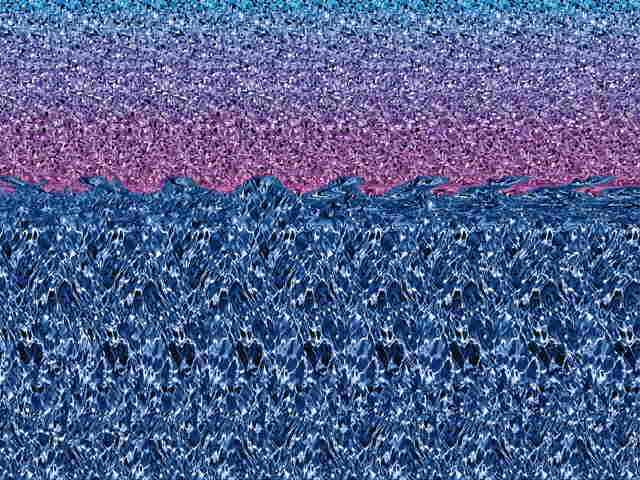 | Air and Sea |
|---|
| (c) Copyright 1995 Small Wonders of Orlando, Inc. |
A stereogram is a picture designed to give the impression of a three-dimensional image. Focus on an object in the distance, maintain that focal point, move the stereogram into your field of vision, stare blankly for awhile, and with patience the image will suddenly appear.
Answer: Jet fighter and submarine
Brian Small is the owner of Small Wonders of Orlando, Inc. The 24-year-old artist recently graduated from the University of Central Florida with a degree in computer science, specializing in computer graphics. He uses a special coloring process to make his stereograms unique.
For book and poster information, please contact Brian at Small Wonders of Orlando, Inc., in Orlando, Florida, USA. |
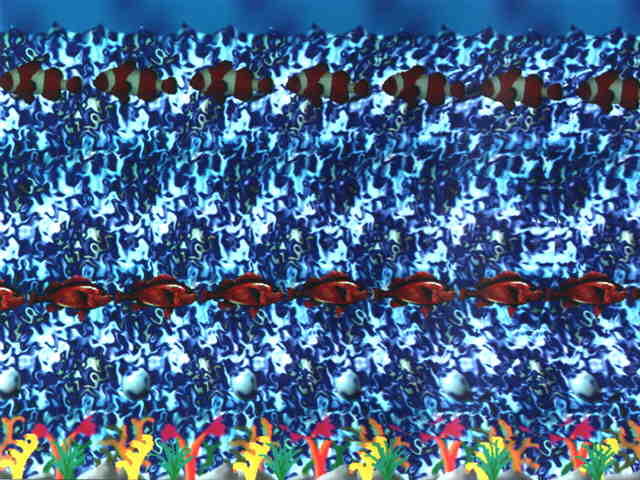 | Underwater World |
|---|
| (c) Copyright 1995 I.C.G., Inc. |
A stereogram is a picture designed to give the impression of a three-dimensional image. Focus on an object in the distance, maintain that focal point, move the stereogram into your field of vision, stare blankly for awhile, and with patience the image will suddenly appear.
Answer: Globe
I.C.G., Inc., creates unique imagery from the Inner Realm(TM) for animation, advertising, and sometimes just for fun. Inner Realm(TM) images are also licensed for use to create retail and corporate products.
For more information, please call (714) 458-6995 or write to P.O. Box 4091, Laguna Beach, CA 92652 USA. |
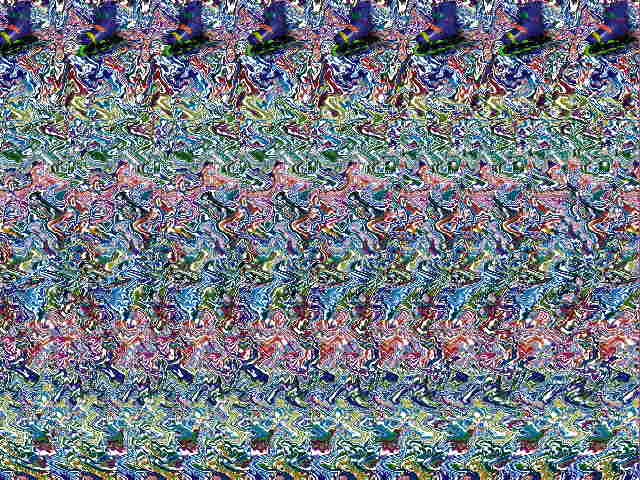 | Rollin', Rollin', Rollin' |
|---|
| (c) Copyright 1995 Small Wonders of Orlando, Inc. |
A stereogram is a picture designed to give the impression of a three-dimensional image. Focus on an object in the distance, maintain that focal point, move the stereogram into your field of vision, stare blankly for awhile, and with patience the image will suddenly appear.
Answer: In-line skates
Brian Small is the owner of Small Wonders of Orlando, Inc. The 24-year-old artist recently graduated from the University of Central Florida with a degree in computer science, specializing in computer graphics. He uses a special coloring process to make his stereograms unique.
For book and poster information, please contact Brian at Small Wonders of Orlando, Inc., in Orlando, Florida, USA. |
 | The Neighbor’s Garden |
|---|
| (c) Copyright 1995 I.C.G., Inc. |
A stereogram is a picture designed to give the impression of a three-dimensional image. Focus on an object in the distance, maintain that focal point, move the stereogram into your field of vision, stare blankly for awhile, and with patience the image will suddenly appear.
Answer: Flamingos
I.C.G., Inc., creates unique imagery from the Inner Realm(TM) for animation, advertising, and sometimes just for fun. Inner Realm(TM) images are also licensed for use to create retail and corporate products.
For more information, please call (714) 458-6995 or write to P.O. Box 4091, Laguna Beach, CA 92652 USA. |
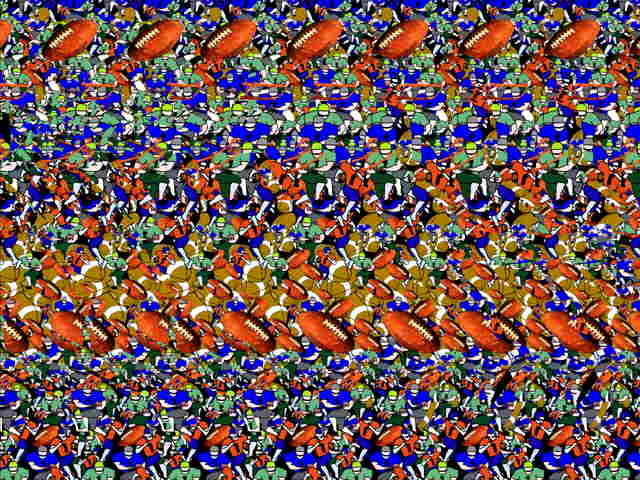 | The Big Play |
|---|
| (c) Copyright 1995 Digi-Rule, Inc. |
A stereogram is a picture designed to give the impression of a three-dimensional image. Focus on an object in the distance, maintain that focal point, move the stereogram into your field of vision, stare blankly for awhile, and with patience the image will suddenly appear.
Answer: Football catch
Bohdan Petyhyrycz is the president and co-founder of Digi-Rule, Inc., a high-technology firm that started with one of his inventions. His extensive training in the fine arts, combined with his tinkering with the autostereogram principle since the late seventies, is evident in the quality of his work.
For more information on Digi-Rule 3D books and posters, please call (403) 292-0320 or write to 2001 10th Ave. SW, Calgary, Alberta, Canada T3C OK4. |
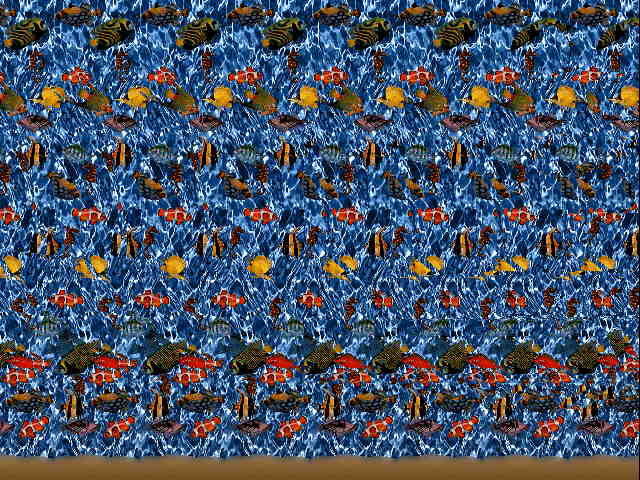 | Silent Realm |
|---|
| (c) Copyright 1995 Small Wonders of Orlando, Inc. |
A stereogram is a picture designed to give the impression of a three-dimensional image. Focus on an object in the distance, maintain that focal point, move the stereogram into your field of vision, stare blankly for awhile, and with patience the image will suddenly appear.
Answer: Scuba diver
Brian Small is the owner of Small Wonders of Orlando, Inc. The 24-year-old artist recently graduated from the University of Central Florida with a degree in computer science, specializing in computer graphics. He uses a special coloring process to make his stereograms unique.
For book and poster information, please contact Brian at Small Wonders of Orlando, Inc., in Orlando, Florida, USA. |
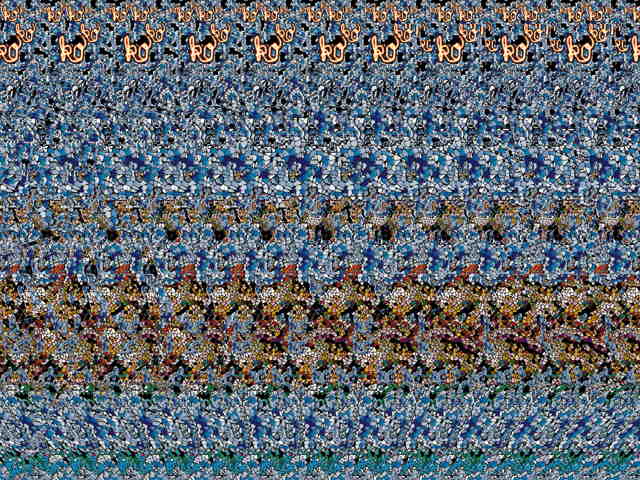 | Knock Out |
|---|
| (c) Copyright 1995 Digi-Rule, Inc. |
A stereogram is a picture designed to give the impression of a three-dimensional image. Focus on an object in the distance, maintain that focal point, move the stereogram into your field of vision, stare blankly for awhile, and with patience the image will suddenly appear.
Answer: Boxing match
Bohdan Petyhyrycz is the president and co-founder of Digi-Rule, Inc., a high-technology firm that started with one of his inventions. His extensive training in the fine arts, combined with his tinkering with the autostereogram principle since the late seventies, is evident in the quality of his work.
For more information on Digi-Rule 3D books and posters, please call (403) 292-0320 or write to 2001 10th Ave. SW, Calgary, Alberta, Canada T3C OK4. |
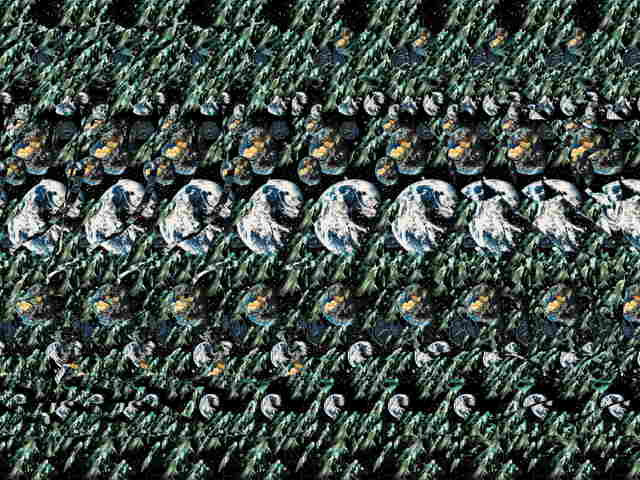 | Undersea |
|---|
| (c) Copyright 1995 Digi-Rule, Inc. |
A stereogram is a picture designed to give the impression of a three-dimensional image. Focus on an object in the distance, maintain that focal point, move the stereogram into your field of vision, stare blankly for awhile, and with patience the image will suddenly appear.
Answer: School of dolphins
Bohdan Petyhyrycz is the president and co-founder of Digi-Rule, Inc., a high-technology firm that started with one of his inventions. His extensive training in the fine arts, combined with his tinkering with the autostereogram principle since the late seventies, is evident in the quality of his work.
For more information on Digi-Rule 3D books and posters, please call (403) 292-0320 or write to 2001 10th Ave. SW, Calgary, Alberta, Canada T3C OK4. |
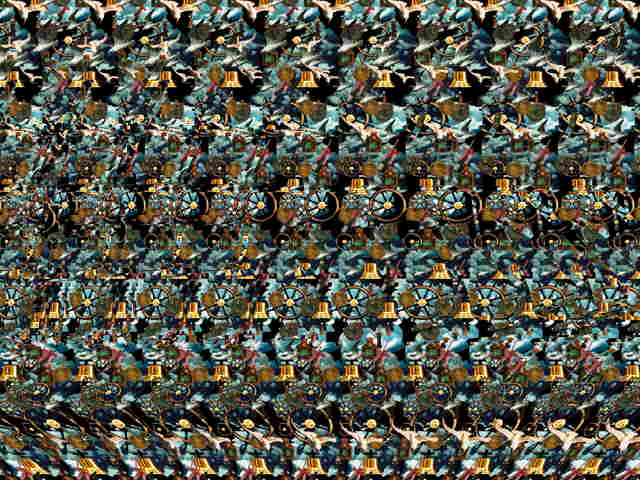 | Voyage |
|---|
| (c) Copyright 1995 Digi-Rule, Inc. |
A stereogram is a picture designed to give the impression of a three-dimensional image. Focus on an object in the distance, maintain that focal point, move the stereogram into your field of vision, stare blankly for awhile, and with patience the image will suddenly appear.
Answer: Clipper ship
Bohdan Petyhyrycz is the president and co-founder of Digi-Rule, Inc., a high-technology firm that started with one of his inventions. His extensive training in the fine arts, combined with his tinkering with the autostereogram principle since the late seventies, is evident in the quality of his work.
For more information on Digi-Rule 3D books and posters, please call (403) 292-0320 or write to 2001 10th Ave. SW, Calgary, Alberta, Canada T3C OK4. |
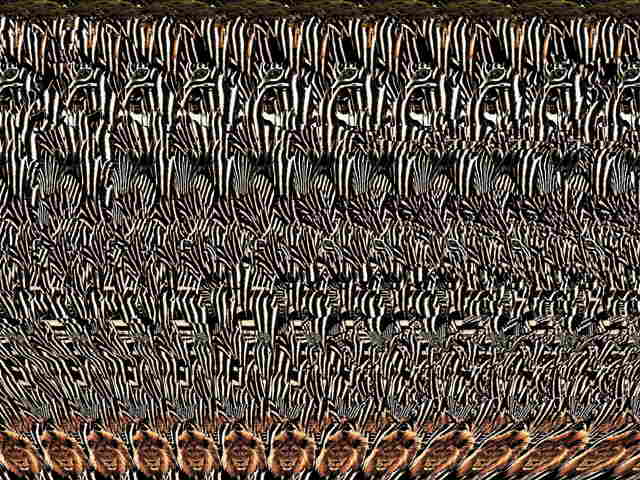 | Foal Play |
|---|
| (c) Copyright 1995 Digi-Rule, Inc. |
A stereogram is a picture designed to give the impression of a three-dimensional image. Focus on an object in the distance, maintain that focal point, move the stereogram into your field of vision, stare blankly for awhile, and with patience the image will suddenly appear.
Answer: Family of zebras
Bohdan Petyhyrycz is the president and co-founder of Digi-Rule, Inc., a high-technology firm that started with one of his inventions. His extensive training in the fine arts, combined with his tinkering with the autostereogram principle since the late seventies, is evident in the quality of his work.
For more information on Digi-Rule 3D books and posters, please call (403) 292-0320 or write to 2001 10th Ave. SW, Calgary, Alberta, Canada T3C OK4. |
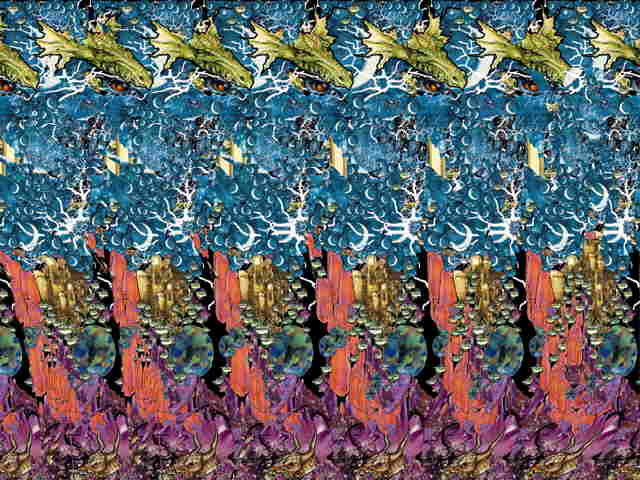 | Medieval Legend |
|---|
| (c) Copyright 1995 Digi-Rule, Inc. |
A stereogram is a picture designed to give the impression of a three-dimensional image. Focus on an object in the distance, maintain that focal point, move the stereogram into your field of vision, stare blankly for awhile, and with patience the image will suddenly appear.
Answer: Dragon and wizard
Bohdan Petyhyrycz is the president and co-founder of Digi-Rule, Inc., a high-technology firm that started with one of his inventions. His extensive training in the fine arts, combined with his tinkering with the autostereogram principle since the late seventies, is evident in the quality of his work.
For more information on Digi-Rule 3D books and posters, please call (403) 292-0320 or write to 2001 10th Ave. SW, Calgary, Alberta, Canada T3C OK4. |
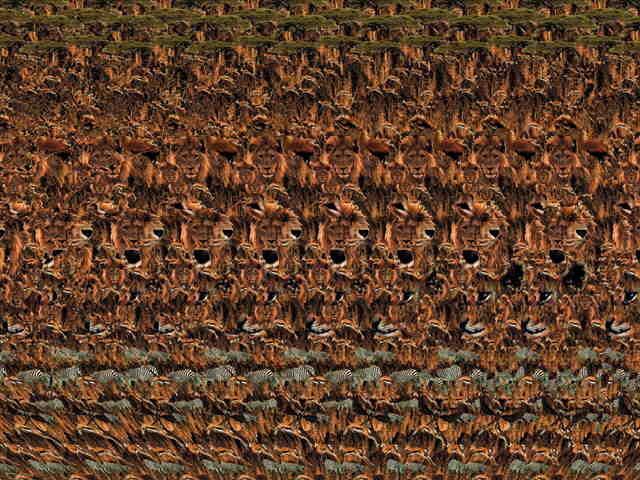 | Family Pride |
|---|
| (c) Copyright 1995 Digi-Rule, Inc. |
A stereogram is a picture designed to give the impression of a three-dimensional image. Focus on an object in the distance, maintain that focal point, move the stereogram into your field of vision, stare blankly for awhile, and with patience the image will suddenly appear.
Answer: Pride of lions
Bohdan Petyhyrycz is the president and co-founder of Digi-Rule, Inc., a high-technology firm that started with one of his inventions. His extensive training in the fine arts, combined with his tinkering with the autostereogram principle since the late seventies, is evident in the quality of his work.
For more information on Digi-Rule 3D books and posters, please call (403) 292-0320 or write to 2001 10th Ave. SW, Calgary, Alberta, Canada T3C OK4. |
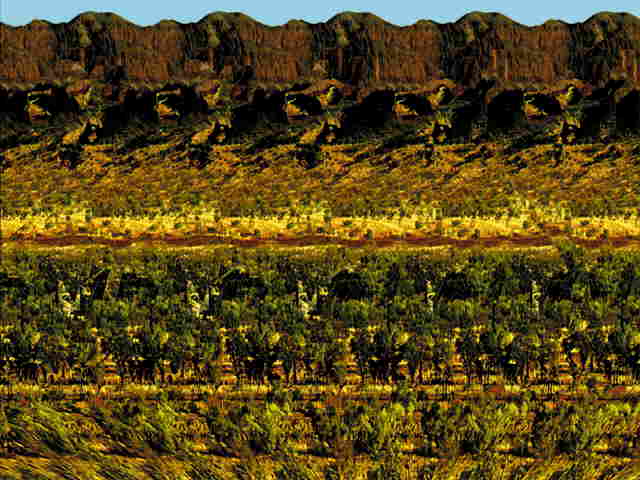 | Down Under |
|---|
| (c) Copyright 1995 Digi-Rule, Inc. |
A stereogram is a picture designed to give the impression of a three-dimensional image. Focus on an object in the distance, maintain that focal point, move the stereogram into your field of vision, stare blankly for awhile, and with patience the image will suddenly appear.
Answer: Kangaroos
Bohdan Petyhyrycz is the president and co-founder of Digi-Rule, Inc., a high-technology firm that started with one of his inventions. His extensive training in the fine arts, combined with his tinkering with the autostereogram principle since the late seventies, is evident in the quality of his work.
For more information on Digi-Rule 3D books and posters, please call (403) 292-0320 or write to 2001 10th Ave. SW, Calgary, Alberta, Canada T3C OK4. |
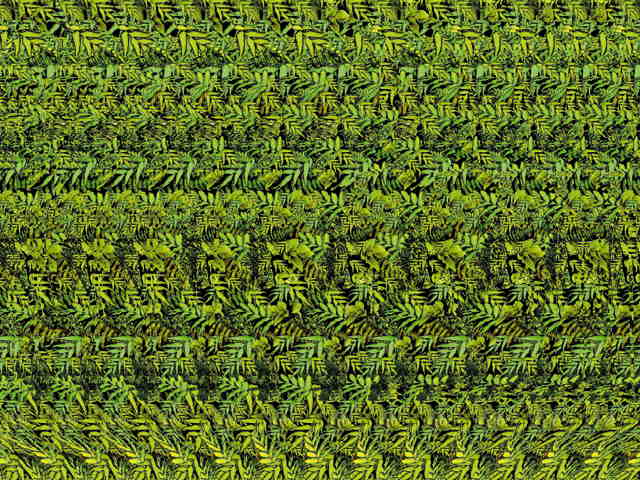 | Go for the Green |
|---|
| (c) Copyright 1995 Digi-Rule, Inc. |
A stereogram is a picture designed to give the impression of a three-dimensional image. Focus on an object in the distance, maintain that focal point, move the stereogram into your field of vision, stare blankly for awhile, and with patience the image will suddenly appear.
Answer: Golfer on the fairway
Bohdan Petyhyrycz is the president and co-founder of Digi-Rule, Inc., a high-technology firm that started with one of his inventions. His extensive training in the fine arts, combined with his tinkering with the autostereogram principle since the late seventies, is evident in the quality of his work.
For more information on Digi-Rule 3D books and posters, please call (403) 292-0320 or write to 2001 10th Ave. SW, Calgary, Alberta, Canada T3C OK4. |
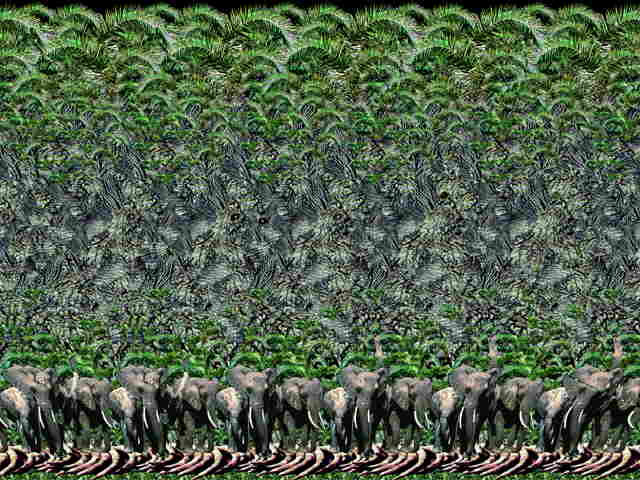 | Endangered Giants |
|---|
| (c) Copyright 1995 Digi-Rule, Inc. |
A stereogram is a picture designed to give the impression of a three-dimensional image. Focus on an object in the distance, maintain that focal point, move the stereogram into your field of vision, stare blankly for awhile, and with patience the image will suddenly appear.
Answer: Elephants
Bohdan Petyhyrycz is the president and co-founder of Digi-Rule, Inc., a high-technology firm that started with one of his inventions. His extensive training in the fine arts, combined with his tinkering with the autostereogram principle since the late seventies, is evident in the quality of his work.
For more information on Digi-Rule 3D books and posters, please call (403) 292-0320 or write to 2001 10th Ave. SW, Calgary, Alberta, Canada T3C OK4. |
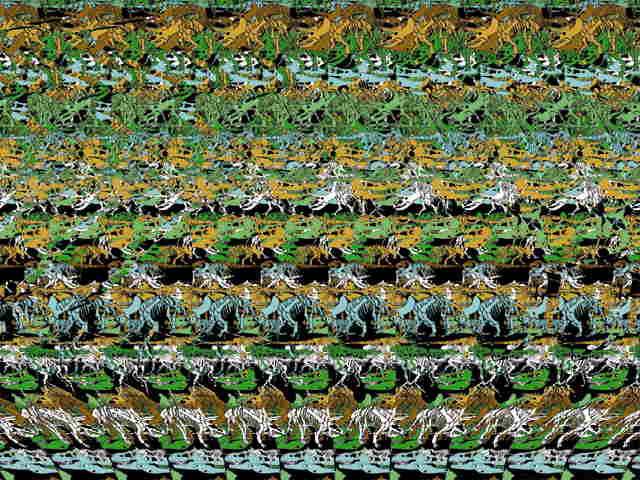 | Fossils |
|---|
| (c) Copyright 1995 Digi-Rule, Inc. |
A stereogram is a picture designed to give the impression of a three-dimensional image. Focus on an object in the distance, maintain that focal point, move the stereogram into your field of vision, stare blankly for awhile, and with patience the image will suddenly appear.
Answer: Triceratops and pteranodon
Bohdan Petyhyrycz is the president and co-founder of Digi-Rule, Inc., a high-technology firm that started with one of his inventions. His extensive training in the fine arts, combined with his tinkering with the autostereogram principle since the late seventies, is evident in the quality of his work.
For more information on Digi-Rule 3D books and posters, please call (403) 292-0320 or write to 2001 10th Ave. SW, Calgary, Alberta, Canada T3C OK4. |
 | Ancient Jungle |
|---|
| (c) Copyright 1995 I.C.G., Inc. |
A stereogram is a picture designed to give the impression of a three-dimensional image. Focus on an object in the distance, maintain that focal point, move the stereogram into your field of vision, stare blankly for awhile, and with patience the image will suddenly appear.
Answer: Stegosaurus
I.C.G., Inc., creates unique imagery from the Inner Realm(TM) for animation, advertising, and sometimes just for fun. Inner Realm(TM) images are also licensed for use to create retail and corporate products.
For more information, please call (714) 458-6995 or write to P.O. Box 4091, Laguna Beach, CA 92652 USA. |


